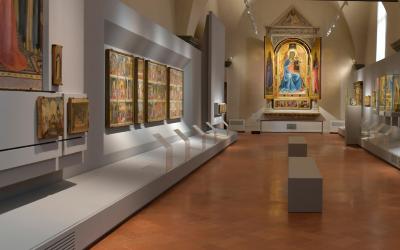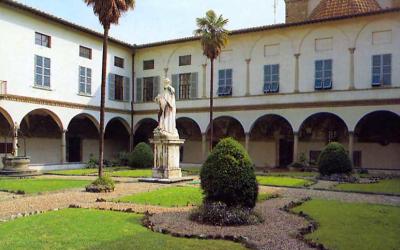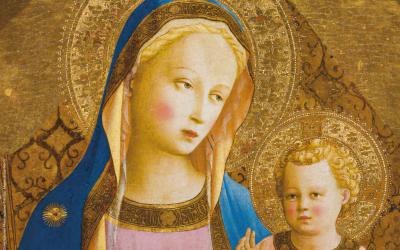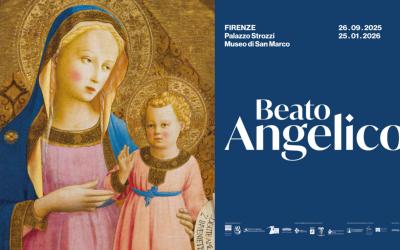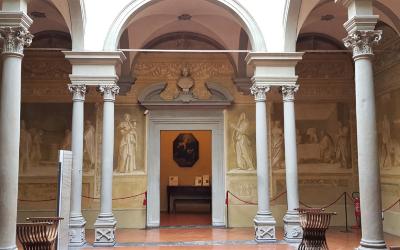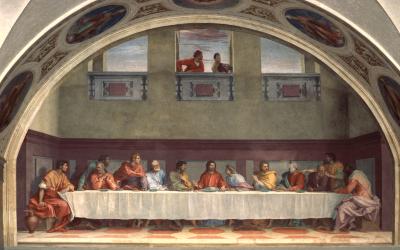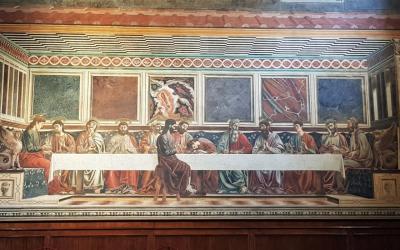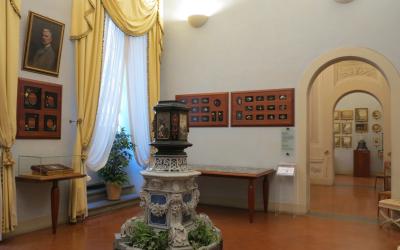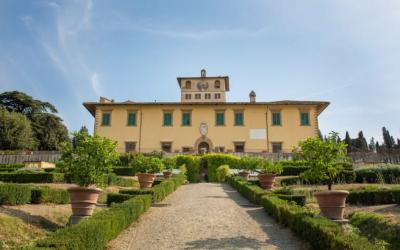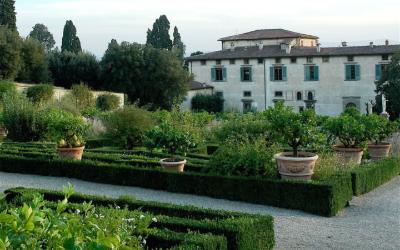The museum occupies the monumental part of the Dominican convent of San Marco.
The architectural masterpiece by Michelozzo, commissioned by Cosimo de’ Medici and built between 1437 and 1443. It houses the world’s largest collection of works by Beato Angelico, one of the greatest painters of the Early Renaissance, who lived in the convent between 1438 and 1445.
-
Opening days
from Tuesday to Sunday
-
Opening times
-
Closing
Monday, January 1st, 5th Sunday of the month and December 25th
-
Extra Opening times
Wednesday, November 19, 2025,
from 4:00 PM to 7:50 PM, last admission at 7:00 PMSunday, November 30, 2025,
from 9:00 AM to 5:20 PM, last admission at 4:45 PMSaturday, December 6, 2025,
from 8:30 AM to 6:30 PM (last admission at 5:15 PM)Monday, December 8, 2025,
from 8:30 AM to 1:50 PM, last admission at 12:45 PMMonday, January 5, 2026,
from 8:30 AM to 1:50 PM, last admission at 12:45 PM - Web Museum of San Marco
-
Feature List
- Info line
- Wheelchair accessible
BRIEF HISTORICAL NOTES
The panel paintings by Beato Angelico were gathered here in the 1920s, after the convent had been declared a monument of national importance in 1869 and partly converted into a museum. On the second floor of the convent, the frescoes that decorated the monks’ cells, created by Beato Angelico between 1438 and 1445, are still preserved.
SHORT VISIT ITINERARY
The visit to the museum unfolds through the splendid spaces of the convent, passing through the Cloister of Sant’Antonino, the Hospice Hall, the Refectory Hall, the Chapter Hall, and the monks’ cells. The museum areas coexist with the adjacent Church of San Marco and with the parts next to the Cloister of San Domenico, still reserved for convent life. Among Angelico’s main works on display are The Annunciation, a masterpiece of Renaissance painting, The Deposition, the Triptych of St. Peter Martyr, the Annalena Altarpiece, the Last Judgment, the San Marco Altarpiece, and the Tabernacle of the Linen Weavers.
NOT TO BE MISSED
The museum also showcases other works of inestimable historical and artistic value, including Ghirlandaio’s Last Supper, Paolo Uccello’s Madonna and Child, paintings by Fra Bartolomeo and Giovanni Antonio Sogliani, terracotta works by the Della Robbia family, and the famous portrait of Girolamo Savonarola painted by Fra Bartolomeo.
The museum’s exceptional heritage is further enriched by the display of some architectural fragments recovered during the 19th-century demolitions in the city center, and by Michelozzo’s Library, built at the express will of Cosimo de’ Medici and enriched with the extraordinary collection of texts belonging to the humanist Niccolò Niccoli. It was the first “public” library of the Renaissance, where, during the Laurentian era, Marsilio Ficino and Pico della Mirandola studied among its precious volumes.
The new “Beato Angelico Hall,” formerly known as the Hospice Hall, which brings together the most important collection in the world of Beato Angelico’s panel paintings, has been completely refurbished thanks to the contribution of the Friends of Florence.
Where
piazza San Marco, 3 - Firenze
From 26 September 2025 to 25 January 2026, the Fondazione Palazzo Strozzi and the Museo di San Marco present BEATO ANGELICO, an extraordinary exhibition dedicated to Fra Giovanni da Fiesole, an artist who symbolizes the art of fifteenth-century Florence.

